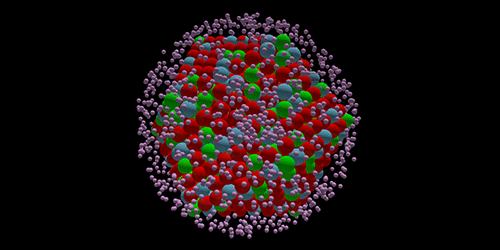Observing the Birth of a Nanoplasma
The high-energy and high-intensity pulses available from x-ray free-electron lasers (XFELs) are leading to new studies of the structure of nanoscale objects such as proteins. But researchers also need to understand the interactions between x rays and matter in order to properly interpret such experiments. Now Yoshiaki Kumagai, of Tohoku University in Japan, and colleagues have revealed the earliest steps in the creation of a so-called nanoplasma, which appears when a powerful x-ray pulse hits a cluster of a few thousand atoms.
The process of creating a nanoplasma has not been clear because of the difficulty of measuring such rapid events, but Kumagai and colleagues used their recently developed technique that has femtosecond (fs) time resolution. They blasted a cluster of roughly 5000 xenon atoms with an x-ray pulse followed by a near-infrared (NIR) pulse capable of ionizing additional atoms, with a controllable delay in between.
The team measured the ion fragments produced versus the delay time and found that the number of ions shot up within about 12 fs and then dropped somewhat over a period of several hundred femtoseconds. They compared these data with a theoretical model and with data from experiments where single xenon atoms were ionized.
The researchers conclude that the initial, plasma-producing x-ray pulse rapidly generates many neutral but highly excited xenon atoms ( ) that can be ionized by relatively low-energy NIR photons. The observed increase in ions at short delay times shows that there’s an initial, rapid increase in the population—atoms that through collisions contribute many ions to the plasma on their own. The team calls these newly discovered atoms the “gateway states driving the birth of the nanoplasma” because they are an important source of plasma ions.
This research is published in Physical Review X.
–David Ehrenstein
David Ehrenstein is the Focus editor for Physics.





